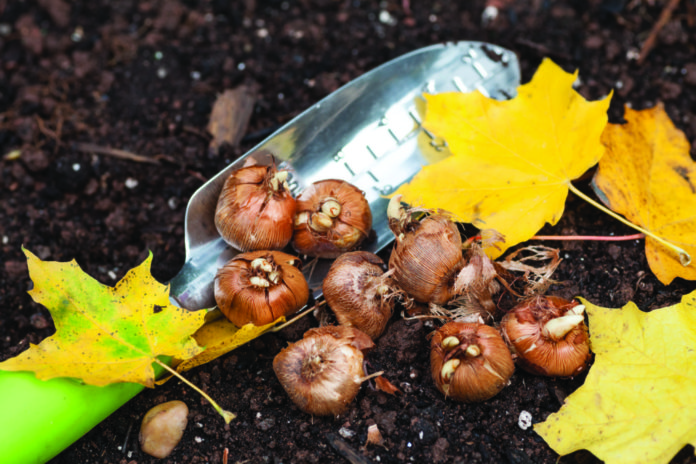With the scent of the last of the chile crop roasting, October wreaths signal Fall with crisp high desert air. Collectively, we know that it is time to prepare the landscape for Winter and its rigors.
The last week of October through the month of November is the ideal time to prepare your landscape and ensure that your eden remains as fruitful until the warming solar rays of the Spring Sun awaken the fertile earth once again. Winterizing the landscape helps insure vibrant spring growth as well as healthier trees, shrubs, lawns, and gardens.
Your trees may be pruned after the bulk of the leaves have fallen, when trees and shrubs are entering dormancy. While there is no need to fertilize your trees and shrubs for the winter, a recommended 5-20-20 granular fertilizer may be applied to lawns and general landscape.
Fertilizing will provide nutrients like phosphorus and potassium that support root systems during the dormant months and help insure plants’ survival.
Watering throughout the Fall and Winter, albeit with less frequency than what is required in warmer months, is paramount for survival of your flora through Winter. The primary reason many trees, shrubs, and other plants do not make it through Winter is a lack of sufficient water.
The ground dries in cold weather just as it does in warm weather, only more slowly Hard freezes on the other hand, will dry the ground as severely as the summer sun. To remain healthy for the next year, your trees, shrubs, lawns and occupied garden beds will need watered at least once a month.

One helpful tip is to water once a week instead; if you forget to water one week, youI will only have missed a week’s worth of watering instead of a month’s worth.
October is the time to plant bulbs for Spring flowering. Daffodil, hyacinth, tulip, and crocus are popular choices.. For best results they should be planted at a depth of 2-3 times the greatest diameter of the bulb.
This is also a great time to plant and transplant trees and shrubs; activities that can be extended up to the coldest days of January. Remember that when transplanting a potted plant to the ground, the hole it is planted in should be about twice the diameter of the pot, and the root ball can be trimmed or disturbed gently to encourage growth beyond the old confines of the pot,.
Your strawberry beds will benefit at this time from an inch-deep covering of hay or even shredded coconut husk It will help to protect them from the cold, drying freezes. There are other winter crops that can be planted at this time including cabbage, collards, spinach and kale, which will add some green to your landscape for the Winter.
Root crops such as radish, carrot, beet, and onion flourish in cool weather and they do well in the high desert Winters. The Brassicas, such as broccoli, cauliflower, and cabbage will do well also. Flowers such as mums, pansies and daisies can be planted now and will bring more color to the yard. With the ever diminishing daylight of Fall, some color in the landscape will tend to lighten the mood and bring an easier transition.
Preparing your vegetable garden for the winter can be as easy as cleaning any debris from the area and removing organic material to the mulch pile. Care should be exercised that any material from diseased or insect infested plants be removed from the property or burned, as these things, are likely to lay dormant and re-afflict your garden next Spring if added to the mulch or turned back into the ground.
Watering your garden via watering your mulch pile provides compost tea rich in nutrients. This both keeps a moist compost, which accelerates composting, and releases nutrients to the tea. Having a mechanism by which compost tea can be collected or distributed to the occupied garden beds makes for larger and healthier plants.
Turning the garden soil in Fall is not vital, although is something that will benefit both the garden as well as gardener. I remember my father and grandfathers practice turning the garden soil before and after crops, citing no harm in aerating the soil while extolling the virtues of exercise.
There are also winter crops known as ‘green manures’ that can be tilled into your garden soil when you are ready for Spring planting. A few of these are alfalfa, wheat, oats, and cereal rye, and they happen to make for great soil amendments.
With Fall upon us and balloons in the air, the freshly harvested cornucopia of enchanted flora nourishes all who are privileged to partake in the bounty borne from the loving labor.
Whether you are strictly a summer gardener or a year around green thumb, there are numerous plantings to excite the senses and keep you firmly rooted in agricultural endeavor spanning the breadth of human civilization.

















